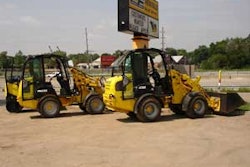The construction industry is a fickle business. One season you may actually be turning jobs away, and the next, you're scrambling to find enough work to keep crews busy and keep cash flowing in.
So far, this year has proven to be a mixed bag. Some segments of the commercial construction industry have seen double-digit growth, while others - particularly those dependent upon residential development - have seen business continue to falter.
Based on industry forecasts, 2009 promises to hold much of the same, or perhaps slightly worse. Residential construction is expected to continue its current weakness through at least the first half, and commercial construction could see its first downturn since 2003.
If your company has been fortunate enough to ride the growth curve thus far, now is not the time to get complacent. And if you've been struggling to make ends meet, you have even more reason to initiate a plan to achieve profitability in an uncertain construction climate.
The first step is to take a good, hard look at your business. This means conducting an honest appraisal of your processes, equipment and personnel (in the field and in the office). Develop a list of the company's strengths and weaknesses. If needed, bring in an objective third party to assist in this evaluation.
Take a look at your strengths and analyze how you might be able to capitalize on them to further grow your business. Talk to project managers, field supervisors and other personnel to see if there are areas that could still be improved upon, or opportunities yet to be tapped.
Ask current customers if there are additional services you can offer - either through self performance or subcontracting - that will enable them to benefit by reducing the number of contractors they need to interact with on a project, and you to benefit by capturing a bigger piece of the pie. Use caution when expanding into unfamiliar territory, but don't be afraid to find additional uses for the skill sets and equipment already in place.
Prioritize the weaknesses on your list to determine which areas require immediate attention. Place an emphasis on those that directly affect profitability. For example, if exceeding estimated equipment costs on jobs is a recurring problem, make it a top priority to determine why it's happening and how to correct it.
If jobsite safety is a weakness, it should also be placed at the top of the priority list. The construction business is too risky, and the repercussions too steep, to shove safety concerns to the back burner.
Of course, there may be situations that require you to spend money in order to overcome a problem area. Say that you have problems managing jobsite logistics. An investment in updated project management software could provide quick ROI via improved work flow and reduced project duration.
The point is don't let the need to invest money back into the business stop you from making changes that could improve long-term profitability. A business slowdown is actually an ideal time to step back and rethink how you've always done things, then clean house of any practices, procedures, personnel or equipment that may be standing in the way of future growth.



















